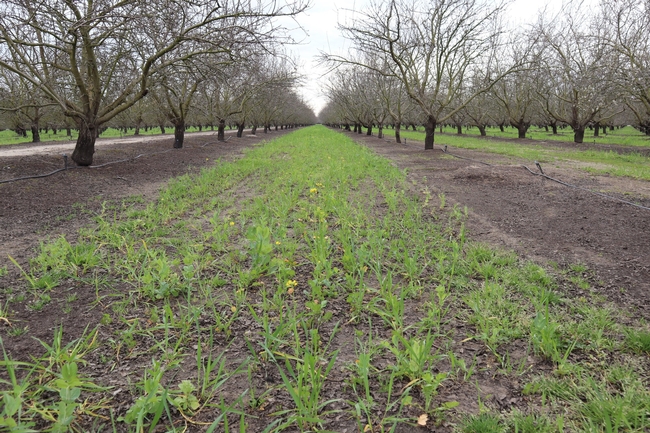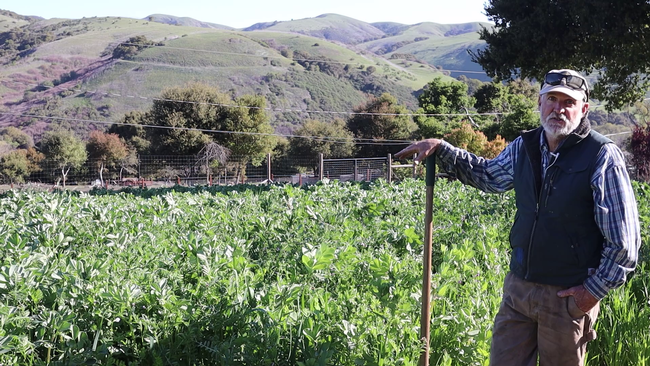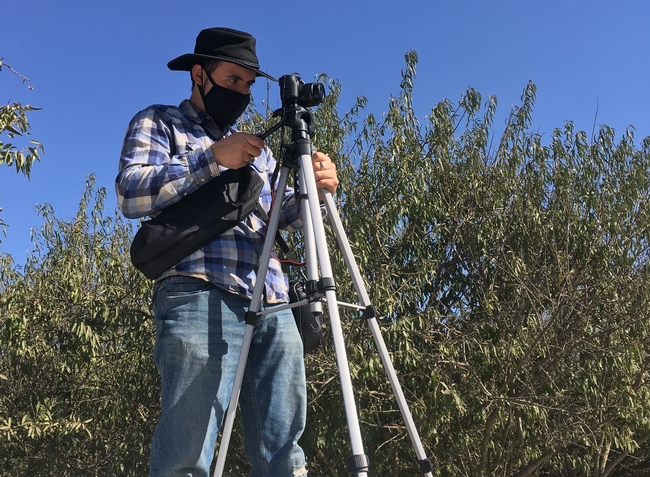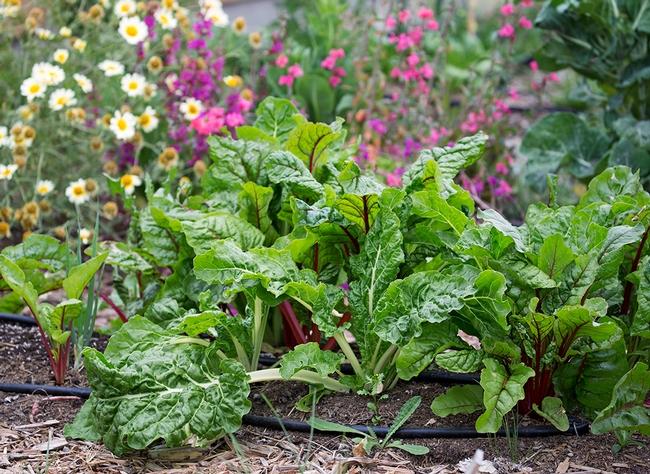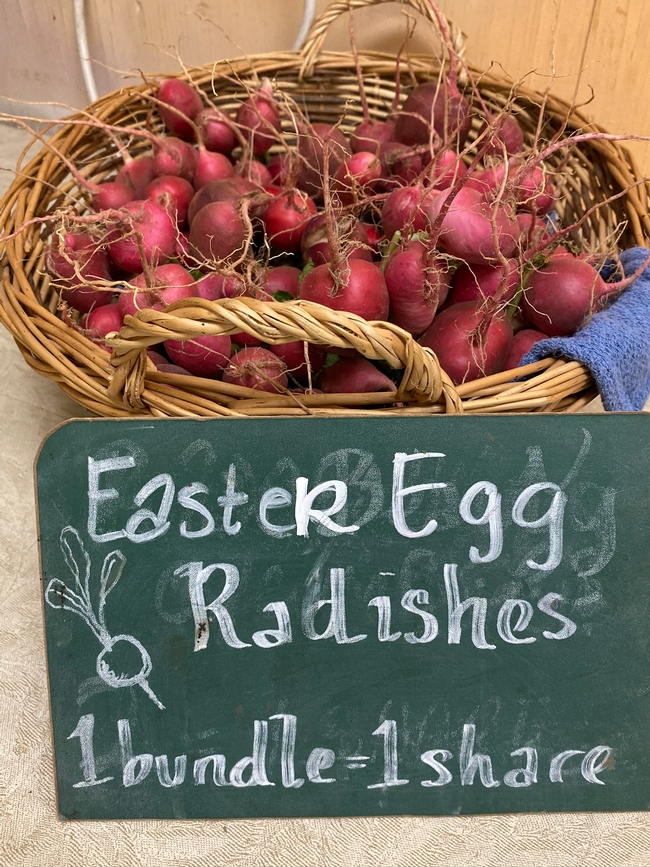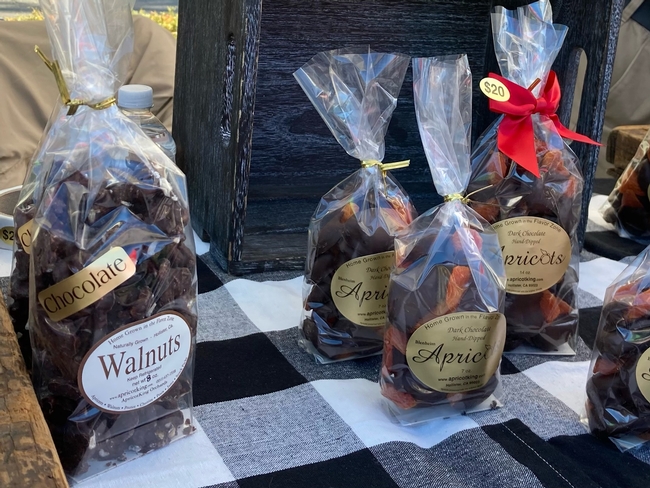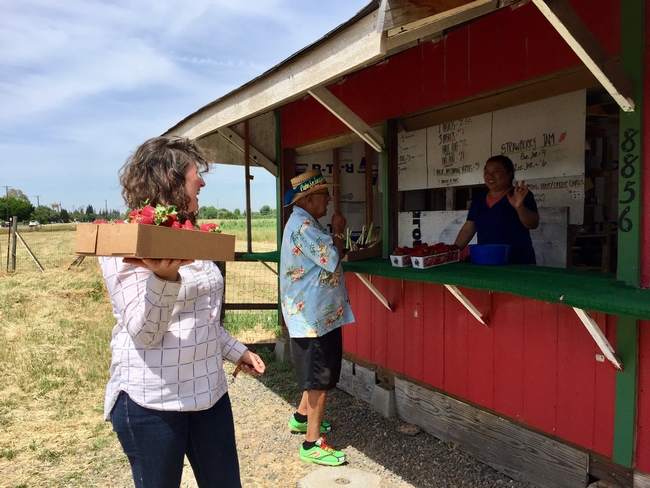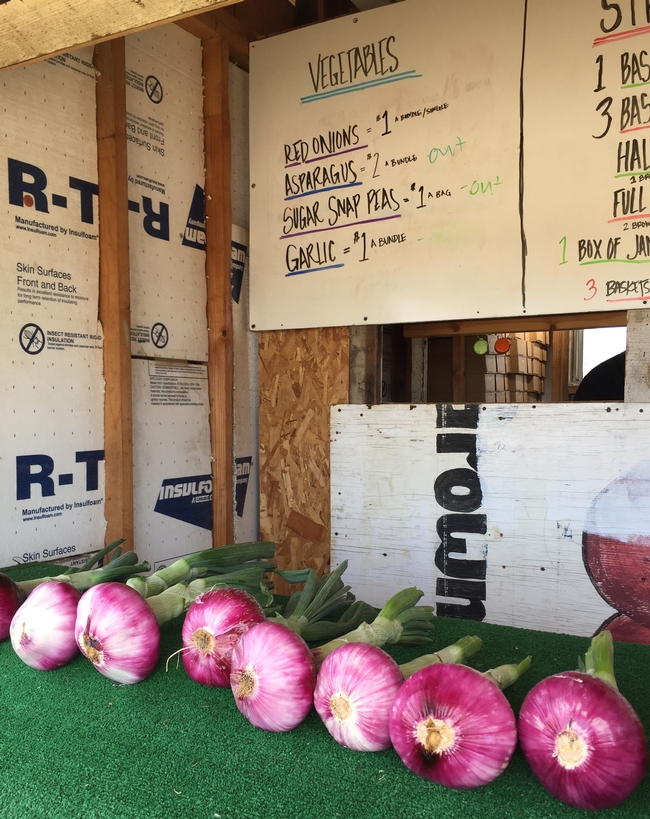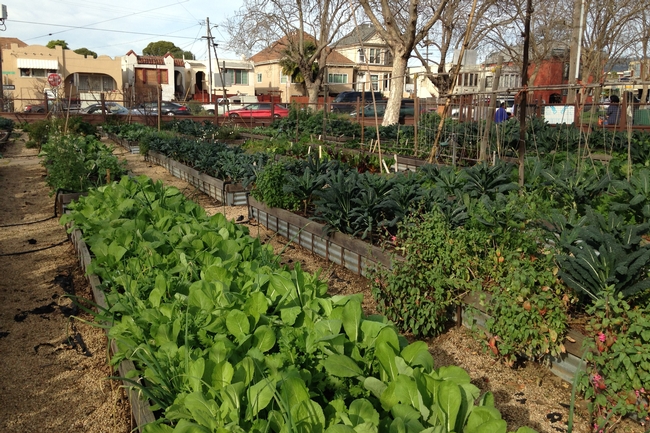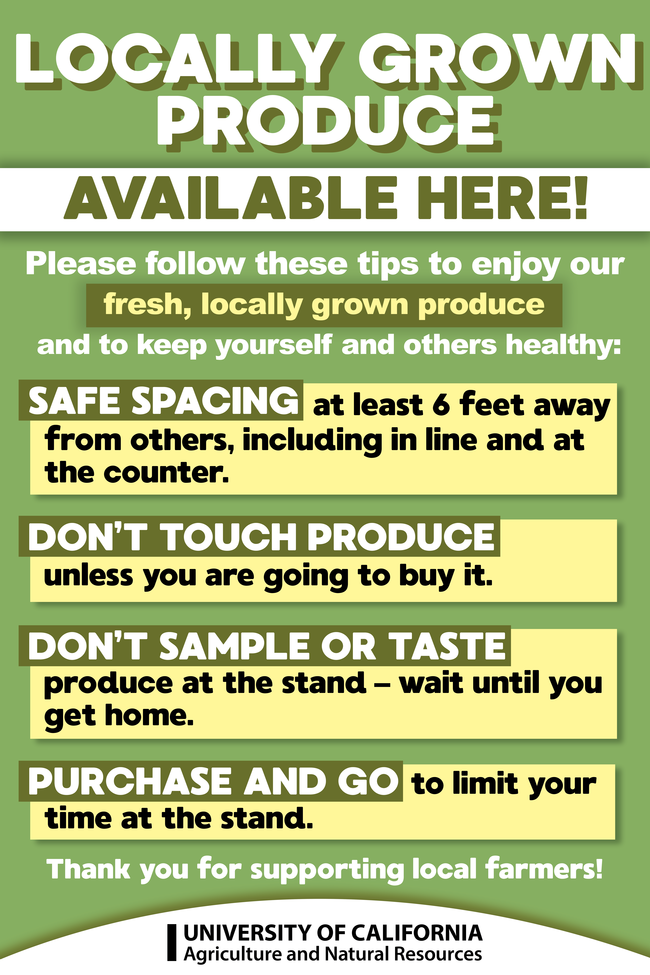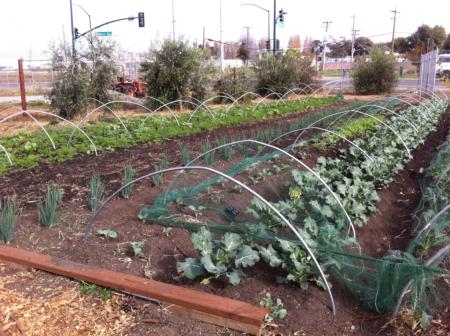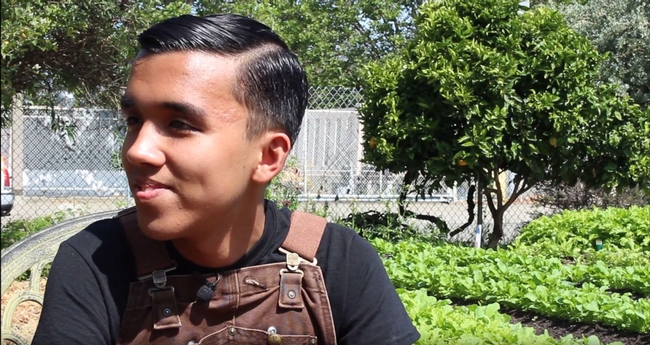Posts Tagged: regional food
Cover cropping season has begun: Free recorded webinars, demos available
Cover crops, typically planted in early fall, deliver a host of agricultural and conservation benefits. But many growers have gone away from planting them due to technical challenges and extra costs associated with the practice. In partnership with the Contra Costa County Resource Conservation District, two University of California Cooperative Extension advisors collaborated to support farmers' cover cropping efforts and reduce costs.
Kamyar Aram, UCCE specialty crops advisor for Contra Costa and Alameda counties, and Rob Bennaton, UCCE Bay Area urban agriculture and food systems advisor, developed online project content for a free educational series on cover cropping, which entails growing non-cash crops to add beneficial biomass to soils.
The series – comprising 10 webinars and five virtual farm-site visits – features UC farm and urban agriculture advisors and some of California's foremost experts on cover cropping. It helps growers overcome their hesitations about the practice, which provides benefits such as alleviating compaction, improving water retention and increasing organic matter and nutrients in the soil.
“Our site visit videos include a diversity of cropping systems, operation types and scales, and levels of experience with cover crops, so we really capture a variety of perspectives,” Aram said. “Now, with the videos online, I hope that they will serve as tools for other farm educators, as well as a resource for growers directly.”
When the COVID-19 pandemic scrapped plans for in-person workshops and visits, the series organizers pivoted to online webinars, starting in fall 2020, which drew more than 150 participants. The recorded videos – which cover basic methods, financial assistance, tips for orchards and vineyards and more – expanded the potential reach and impact of the series far beyond Contra Costa County.
“Each video, whether it's a webinar recording or a virtual site visit, emphasizes different aspects, and the titles are designed to help viewers find the resources they are most likely to benefit from,” said Aram. “There really is something for everyone.”
In particular, the organizers of the series recognized the importance of including technical and extension support to urban and semi-urban farmers in the East Bay and beyond.
“We wanted to make sure to include practical support from fellow farmers that was both accessible and relevant to our diverse small and urban farmers,” said Julio Contreras, UCCE community education specialist. “This meant covering topics like seeding with spreaders or by broadcasting – using small equipment and machinery or no-till systems – and even cover cropping in planter boxes.”
Aram and Bennaton also credited their Contra Costa Resource Conservation District partners: Ben Weise, agriculture conservation manager; Derek Emmons, agriculture conservation coordinator; and Chris Lim, executive director.
The project, funded by a Specialty Crops Block Grant from the California Department of Food and Agriculture, was also made possible by the generous contributions of time and expertise from presenters and hosts of farm-site visits, according to Aram.
“I hope that the videos will enjoy a long life online; they really contain a wealth of knowledge,” he said.
The series is available for view at http://ucanr.edu/CoverCropsCoCo.
New food-safety guide outlines laws and best practices for urban farmers
Californians growing food in cities now have help understanding the food safety laws that apply to them. A free publication containing California-specific information on rules and regulations for urban farmers was recently published by the University of California Agriculture and Natural Resources.
Growing fresh fruits and vegetables in community gardens, backyards and rooftops helps provide more food for urban communities, creates jobs and teaches people about the value of healthy foods, according to Jennifer Sowerwine, lead author and UC Cooperative Extension specialist at UC Berkeley.
"There are a growing number of backyard and community producers who are scaling up to sell some of what they grow,” said Rachel Surls, UC Cooperative Extension sustainable food systems advisor based in Los Angeles County and co-author. “We hope this guide will help them navigate the regulations and learn best practices for keeping food safe for consumers."
“California Urban Agriculture Food Safety Guide” provides urban food producers with an overview of food safety laws and regulations that may impact their operations. To help minimize the risk of contamination of foods during their production and exchange, it also provides best practices, or Good Agricultural Practices (GAPs).
"People donating produce grown or gleaned from urban environments will learn what laws may apply to them, and practical steps they can follow to minimize the risk of foodborne illness from urban-produced foods,” Sowerwine said.
The 72-page guide covers fresh produce safety, urban soils safety, as well as food safety considerations for eggs, poultry and small livestock in the urban environment. The authors also point out which aspects of the Food Safety Modernization Act apply to urban farms, California laws that apply, record keeping requirements, information on working with gleaners, how to register as a community supported agriculture (CSA) organization, permitting requirements, and how to develop a food safety plan.
Urban farmers can do a food safety assessment of their own farms using a check list included in the publication.
The guide was produced by Sowerwine; Christina Oatfield, Sustainable Economies Law Center policy director; Rob Bennaton, UC Cooperative Extension urban agriculture advisor; Alda Pires, UC Cooperative Extension in the UC Davis School of Veterinary Medicine; Surls; Valerie Borel, UC Cooperative Extension program representative; and Andre Biscaro, UC Cooperative Extension agriculture and environmental issues advisor.
The publication “California Urban Agriculture Food Safety Guide: Laws and Standard Operating Procedures for Farming Safely in the City” is available for free download at https://anrcatalog.ucanr.edu/pdf/8660.pdf.
Urban ag supplies fresh fruits and vegetables, part of a healthy diet
Even as Californians shelter in place to contain the novel coronavirus that causes COVID-19, nutritious food remains vital to the health and well-being of our communities.
“Eating fruits and vegetables is known to benefit our overall health and help our immune system,” said Lorrene Ritchie, director of the UC Nutrition Policy Institute. “At a time when we need to be especially vigilant about staying healthy, eating healthy is essential.”
Farms, farm stands and farmers markets are listed as “essential businesses” in the state shelter-in-place order because they are important parts of the food supply. Urban farms are included in this category. As large produce distributors struggle to switch from selling large quantities to restaurants, schools and institutions to supplying supermarkets, these small businesses may offer a better selection of fresh foods, and may be closer to homes and less crowded.
To help minimize exposure and risk of spreading of the virus, urban farms need to follow some key guidelines from the CDC , said Jennifer Sowerwine, UC Cooperative Extension metropolitan agriculture and food systems specialist in the Department of Environment, Science, Policy and Management at UC Berkeley.
UC Cooperative Extension has compiled a list of resources for farmers, community gardeners and other people working in the food system to ensure that they can continue supplying fresh, healthy and affordable food to Californians.
“Social distancing, heightened health and hygiene practices and cleaning and disinfecting reduce the risk,” said Sowerwine.
Although eating a nutritious diet can boost our immunity, the Los Angeles Times reported produce sales plummeted by 90% or more at Southern California produce markets after the statewide shelter-in-place rules went into effect.
“It's worrisome to see that sales of fruits and vegetables are dropping so sharply, but not surprising,” said Rachel Surls, UC Cooperative Extension sustainable food systems advisor for Los Angeles County. “As people shop during the crisis, they may be prioritizing groceries that can be stored for a longer time in the fridge or pantry. And they may be on a very limited food budget, even more so than usual, so they are likely prioritizing essentials like bread and rice and baby formula.”
To support farmers in California, the UC Sustainable Agriculture Research and Education Program created a directory at http://www.calagtour.org for consumers to find local farms to purchase produce directly.
For families who have lost jobs and income, the risk of food insecurity increases. Some families could supplement their food from gardens and urban agriculture during this crisis.
Consumers must practice safety, too, when visiting farmers markets and farm stands. UC Cooperative Extension small farm advisor Ruth Dahlquist-Willard explained, "Things like keeping the minimum six-foot distance from customers, not touching any produce that you're not planning to buy, leaving as soon as you've made a purchase and washing the produce when you get home would be some good guidelines."
The virus is thought to be spread mainly from person to person, however there is evidence that COVID-19 can last for days on hard surfaces, thus the need to ramp up good health and hygiene practices, social distancing and cleaning and sanitizing of surfaces.
University of California research and extension faculty have compiled a list of helpful fact sheets and resources for farmers, community gardeners and other food system workers to ensure fresh, healthy and affordable food for communities across the state:
- Food-related resources for consumers and members of the food industry for COVID-19
- on the UC Davis Food Safety website.
- Sowerwine's PowerPoint presentation Safe Handling Practices for Fresh Produce in a Time of Coronavirus Disease 2019 (COVID-19) for urban farmers.
- A set of policies and procedures for safe food handling at the farm during COVID-19 provides step-by-step instructions for applying new food and health precautions on the farm including checklists, standard operating procedures and signage posting guidelines for preventing the spread of infection.
- COVID-19 safety guidelines for farm stands.
- Handouts for safe food-handling at home that can be distributed to customers receiving food from the farm.
All of these resources are posted on the UC Urban Agriculture website at https://ucanr.edu/sites/UrbanAg.
“During this challenging time, I am heartened by the quick and thoughtful responses by many extension, grassroots and institutional efforts, including Community Alliance with Family Farm's COVID-19 Responses and Resources for California Family Farms, Mutual Aid organizations where groups of young, healthy and lower-risk people are bringing food and services to vulnerable people who shouldn't be in public at all, and Bayareafood.info that seeks to support local restaurants, farmers, and food systems workers as they weather this latest storm,” said Sowerwine. “Crisis can spawn innovation, and I am hopeful that through this, we will come out the other end with a more compassionate and resilient food system.”
UC ANR hosts workshops for California's urban farmers
Building on the needs assessment, a team of UC ANR researchers created a resource website for California urban farmers. This year, team members and local partners are conducting a series of trainings for urban farmers around the state, designed to help city growers build their knowledge in key areas. The series just wrapped up in the Bay Area, and will roll out in Los Angeles starting on July 21. The Los Angeles series dates and topics are:
- July 21. Legal Basics of Urban Farming. Are you an urban farmer navigating the rules and regulations related to growing and selling food? A school or non-profit organization involved in farming? This workshop will help position you for success.
- July 28. Production Issues and Urban Farms. Are you an urban farmer learning the ins and outs of growing and harvesting crops? This workshop is designed to guide urban farmers through common production challenges related to soil, water use, and pest management.
- August 4. Marketing and Business Management for Urban Farmers. From business planning to labor laws, learn the basics to help you succeed.
- August 11. Food Safety Basics for Urban Farmers. Learn how to ensure a safe harvest, from the field to the fork.
Local partners are key to planning and hosting these events, including the Los Angeles Food Policy Council, the Collaborative for Urban Agroecology Los Angeles, Cal Poly Pomona College of Agriculture, Community Services Unlimited, GrowGood, the Growing Experience, and others.
The series will also be held in Sacramento and San Diego in early 2018. For updates and announcements, follow UC ANR's Urban Agriculture blog, Facebook, and Twitter. And be sure to bookmark our UC Urban Agriculture website which offers resources on production, policies, and more.
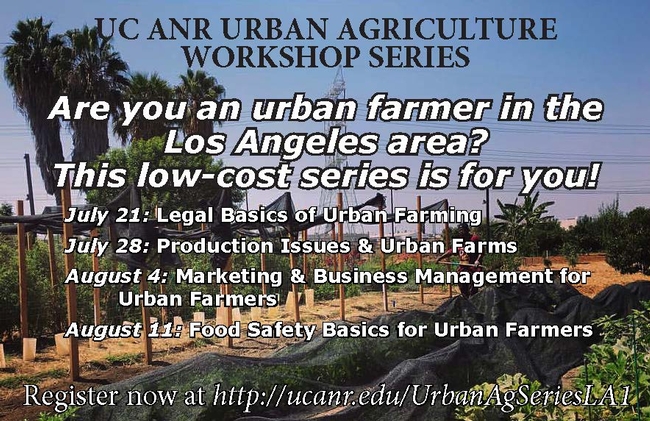
Urban Ag Workshop Series-SoCal 5-23-17A (3)
Youth speak, we listen: Youth voices in urban agriculture and building the UC connection
For many youth in California, agriculture is becoming part of their urban experience. Urban farms, edible parks, and garden education programs are thriving in cities across the state. These places grow food, teach youth job skills, create community green space, and help build food security.
Steven Palomares is one of those youth. As an intern at WOW Farm in 2016, Steven grew and harvested produce, delivered it to local restaurants, and participated in a weekly business management class.
"I like to think of this garden as very important to the community,” said Steven. “Since most of [Oakland] is low income neighborhoods, this farm provides access to fresh organic produce. It also teaches the youth a set of job skills they can apply to other jobs, and teaches them a bit more about nutrition.”
Many youth echo Steven's sentiment, finding skills, purpose, community, and good food at the sites they are a part of.
The UC Sustainable Agriculture Research and Education Program (UC SAREP) and UC Cooperative Extension Los Angeles County have been working together to better understand the ways the University of California can support urban agriculture through the lens of youth participants.
These two videos, funded by the UC Global Food Initiative, are part of an ongoing effort to build strong connections between the University of California and urban agriculture programs. They highlight the community-based work of these programs and show some of the challenges they face.
In this video, Bay Area youth share their experience at urban agriculture programs, and program manager share their goals and challenges.
In this video, youth give us a tour of Southern California urban agriculture programs, their visions, and needs.
Currently, UC Cooperative Extension has two advisors dedicated to working with urban agriculture. Rob Bennaton works as an urban agriculture advisor in the Bay Area, and Rachel Surls works with urban farms as Los Angeles County's sustainable food systems advisor. UCCE hosts a growing website of resources for urban farmers, urban agriculture advocates, and policy makers.
"Our hope is that, by listening to people working in urban agriculture and building partnerships with them, we can find long term, meaningful ways to support their work,” said Gail Feenstra, deputy director of UC SAREP. “They share so many of the same goals as the UC — they're really focused on developing leaders who will make our cities healthy, prosperous places to live."
Steven Palomares may just be one of those leaders. In fall of 2015, Steven began his freshman year at UC Davis majoring in biological sciences and political science, interested in pursuing work that integrates science and policy. Also on his mind: someday Steven wants a home garden growing all the necessary produce for salsa and guacamole.

